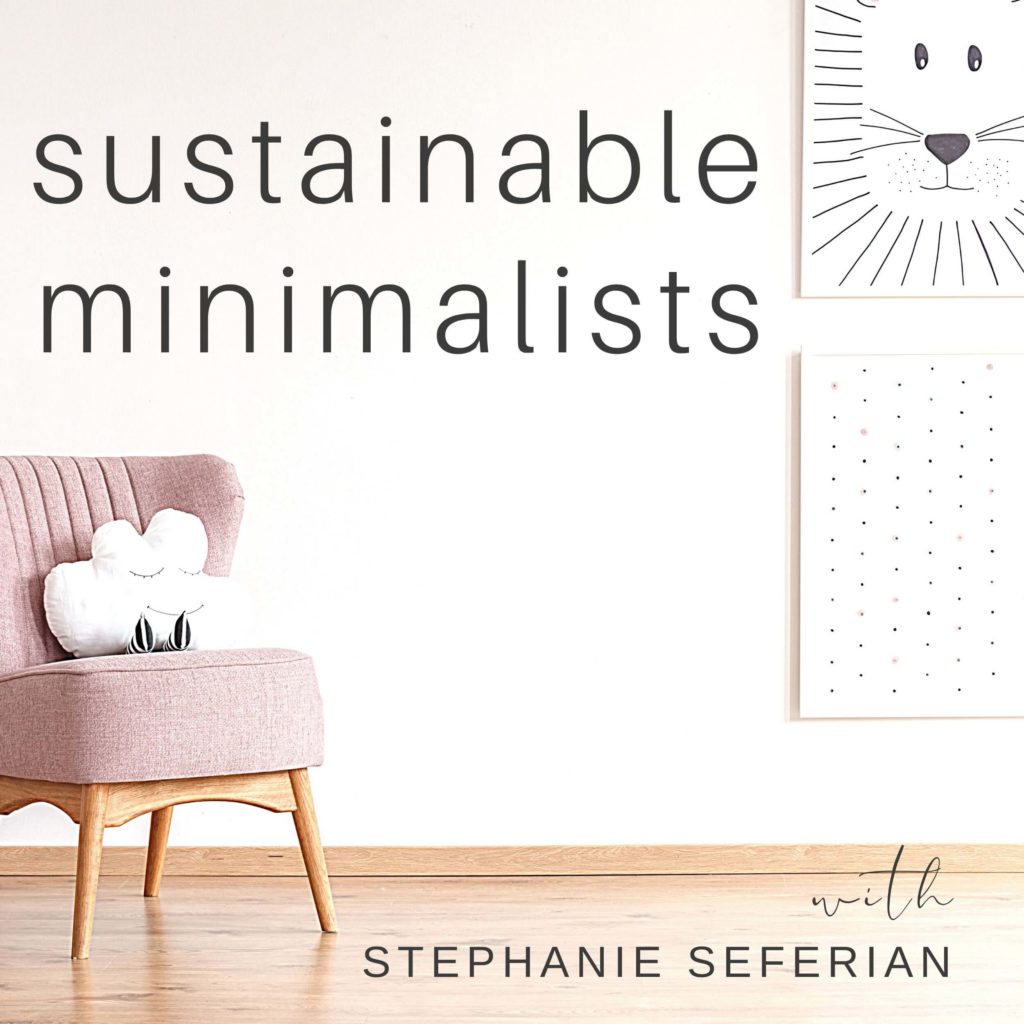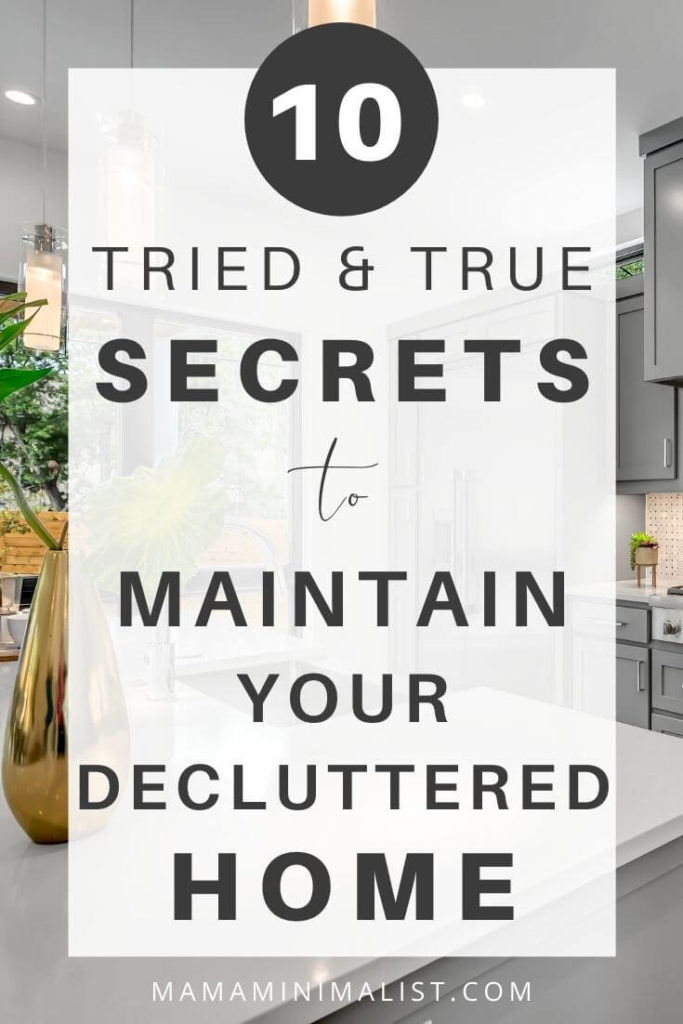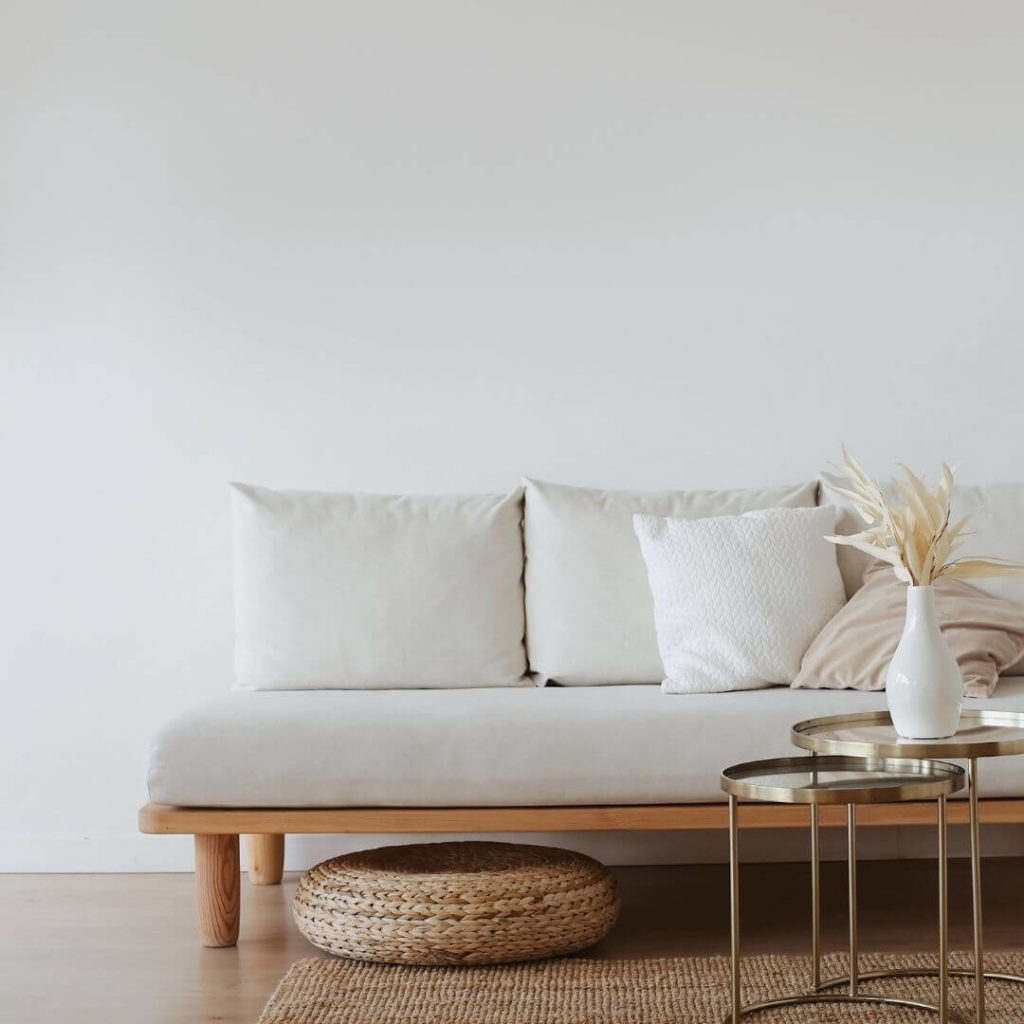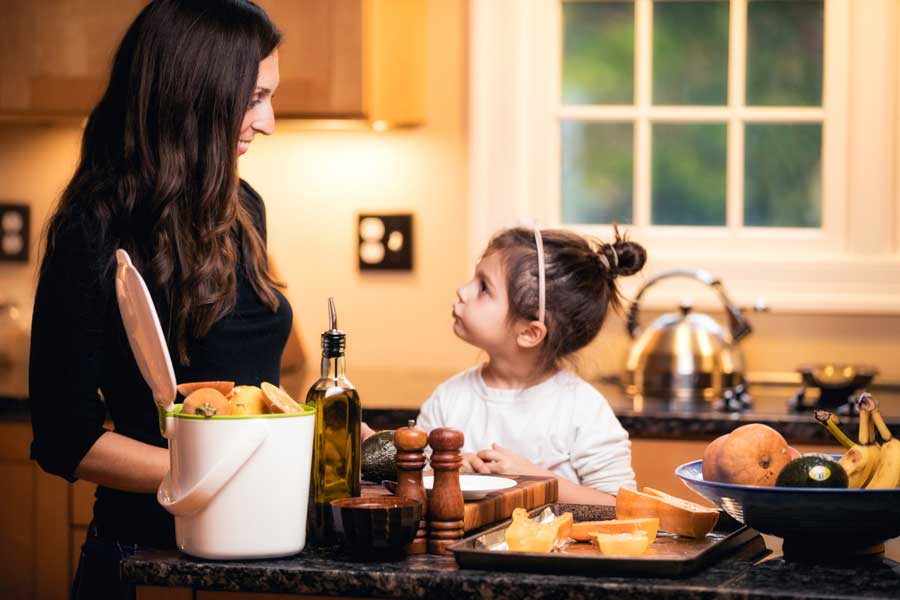How to Declutter Your Home: 10 Secrets
How to declutter your home: 10 Secrets
Want to learn how to declutter your home but have no idea where to start? Decluttering starts by first understanding that there is a difference between declutterers and successful declutters.
Successful declutters are dedicated to keeping their homes tidy for the long haul, and many follow 10 vital (but rarely touted) secrets.
Here’s how to successfully declutter your home for good (and keep it that way!):
1. Give the “dumping ground” extra TLC.
I have a built-in desk in my kitchen, and it is the dumping ground in my house. My children drop their school papers on the desk. I plop the mail down there, too, then forget about it.
You name it, it finds its way to the dumping ground.
In a perfect world, you would create designated spots for all the stuff that generally finds its way to the dumping ground and voila, you will no longer need a dumping ground because everything has its place.
But if you live in less of a perfect world and more of realistic one, you understand that your dumping ground likely isn’t going anywhere anytime soon. So instead of trying to get rid of the dumping ground altogether, give it extra love, care, and attention.
Chances are, stuff will still end up there every day, but if you get in the habit of clearing it off and cleaning it up every single night, you will create a clear flat surface. And that clear surface? It will reduce the likelihood of additional clutter piling up.
2. Enact a foolproof an entryway system.
Messy entryways set the tone for the entire home.
When you come home, you deserve to talk into a serene space, not an untidy one that immediately raises your blood pressure.
Shoes left in the entryway makes the entire space feel cluttered, and so simply removing shoes from the floor is a simple decluttering secret.
If you have children—particularly young children—make sure your shoe system is so simple that it empowers your kids to tidy their own shoes. In my house, each daughter has a basket, and they are able to put their shoes in their respective basket. Done.
Same for coats and backpacks. Make sure to hang coat hooks low enough so young children can hang up their own coats and jackets.
When you create a system that works for everyone, you no longer have to run around behind everyone cleaning up their messes.
No kids? No problem. One of the easiest entryway organizing tricks is to put a shoe rack in your entryway closet.
Make it a rule that no more than two pairs of shoes per person are allowed in the entryway. (The rest must be stored in personal closets!) Doing so will prevent your entryway from overflowing with massive amounts of shoes, most of which aren’t worn on a daily basis.
3. How to declutter your home? Understand the realities of ‘sunk costs’.
Many aspirational minimalists get caught up in the decluttering process because they are reluctant to let go of items that cost them money. And that is perfectly understandable: No one wants to waste money.
But successful minimalists understand that a sunk cost occurs the second you hand over payment for an item, because that’s when you lose the money.
Unless you return the item in 30 days or whatever the return policy is, you will never get back what you paid. The cost is sunk.
You have already spent the money, so forget about sunk costs. Instead, use it as a learning experience: Learn from your mistakes and buy less clutter going forward.
Shift your spending mindset, too, as doing so means that you will not struggle to live clutter-free long-term.
Prefer Audio? (Me too!)
You can find this episode of The Sustainable Minimalists podcast (and much more!) wherever you listen to podcasts.
Apple Podcasts | Google Podcasts | Spotify | Stitcher
4. Understand the benefits and the drawbacks between the “One in, One Out” Rule.
Many minimalists swear by the “One in, One out” rule, which goes as follows: Every time you bring something new into your house, declutter something similar.
Personally, I love the “One in, One out” rule. Just last week I purchased a new pair of leggings. Having a new pair means that I no longer have to keep the woefully ripped, stretched out leggings that I have worn for the last decade. One in, one out.
There is a problem with the “One in, One out” rule, however, and the problem is that it gives you tacit permission to keep buying more.
Theoretically, you can mindlessly purchase to your heart’s content because you will declutter something similar when you get home.
When you use the “One in, One out” rule in your own life, remember to use it to justify replacing something that you genuinely need to replace.
5. Declutter furniture.
A lot of decluttering advice focuses on letting go of small things like knick-knacks and home decor. But for an instant refresh your space, tackle your furniture.
Furniture is often pricey, and so it’s natural for us to accumulate it.
But have you ever walked into a home that just feels overcrowded? Chances are, that home has too much furniture stuffed between its rule.
I’m not necessarily suggesting you go out tomorrow and sell your dining room table (although if you never use it perhaps you think about it!). Instead, analyze which oversized items are unused and simply taking up space.
[Related: Declutter Your Decor in Under 10 Minutes.]
6. Remember that needs change over time.
Life isn’t static: Our needs and interests shift over time and the possessions we choose to own change along with them.
We need to keep different possessions for different seasons of life. The most pressing example of how our possession needs change over time is with children’s clothes and gear. Is your child a size 4t? Assuming you have no plans to have more children, you no longer need 2t and 3t clothes.
Your interests likely shift over time, too. I used to be a big scrapbooker. Yet I haven’t scrapbooked in over 10 years, and so there is no need to store all the different scissors, all the stickers, or all the stencils.
My interests changed, and so the possessions I choose to keep must then must change, too.
7. Organize less and declutter more.
If you want to know how to declutter your home, understand that tidiness is a natural consequence of being decluttered.
Said another way, organization and tidiness become infinitely easier once you have decluttered.
If you have fewer items, you will spend less time and energy trying to keep them organized. Focus less on buying the right baskets and bins (which comprise an entire industry in itself) and instead focus more on paring down.
When it’s time to organize, reuse items you already have instead of spending money on unneeded organization items. I use a baby food jar to store my bobby pins; I organize my daughters’ underwear and socks within lidless shoeboxes in their drawers.
You can have the most perfectly organized and labeled and color-coded organization systems in place, but if you have a lot of stuff, you will be spending a lot of time maintaining your organization systems.
Having less stuff makes organizing easier, yes, but natural, too.
8. Make decluttering less of a big to-do and more of a daily habit.
That first whole-house declutter is indeed a big to-do.
But after your home is tidy, successful minimalists understand that the work isn’t done.
Understanding how to declutter your home means understanding that the work has changed, yes, but the work is never complete.
When decluttering becomes a habit, you naturally find yourself on the lookout for things you can responsibly unload as you move about your day. Strive to make decluttering less of a big to-do and more of a quiet household chore that is best performed daily.
My absolute favorite way to do this is to practice the 5-Minute Rule.
If I can accomplish a task in 5 minutes or less I just do it right then and there. I don’t put it off. I don’t delegate the job to someone else. Instead, I just do it.
The benefits to following the 5-Minute Rule is that the job gets done and the stress of the job looming over me is successfully off my shoulders and off my mental load.
[Related: Your Whole-House Decluttering Plan.]
9. Donate the contents of your Donate Box the second you fill it.
The Donate Box is a wonderfully simple solution to help you declutter daily while also encouraging your family to do the same.
Perhaps you are in the habit of finding 5 things per day to donate. If so, excellent! Put these in items in your Donate Box as you go about your day, and encourage your kids and your partner to do the same.
Here’s the key, though: Once your Donate Box is full, go donate it.
Successful minimalists don’t leave the full box the basement or forget about it in the trunk of their cars. They donate it immediately, and they do so because they understand intuitively that the decluttering job is not done until the decluttered items are successfully and responsibly discarded.
10. Become a ruthless gatekeeper.
Every possession demands time, effort, and energy to maintain, so learn how to declutter your home on the front end by empowering yourself to step into the role of household gatekeeper. As gatekeeper, you decide which items you grant admittance into your home; you check everything else at the door.
I am a ruthless gatekeeper. I politely decline the T-shirts my daughters receive for sports participation, and I “forget” to take the party favors when leaving kids’ birthday parties. We do not stop at the treasure chest at the dentist’s office and, when returning from the mailbox, I first head to the recycle bin in the garage and discard the junk mail.
Be intentional about what you grant admittance into your home. Remember that unnecessary stuff creates clutter, and clutter takes more than it gives in the forms of time and stress.
Stay in-the-know!
Sign up for monthly eco-friendly inspiration.






